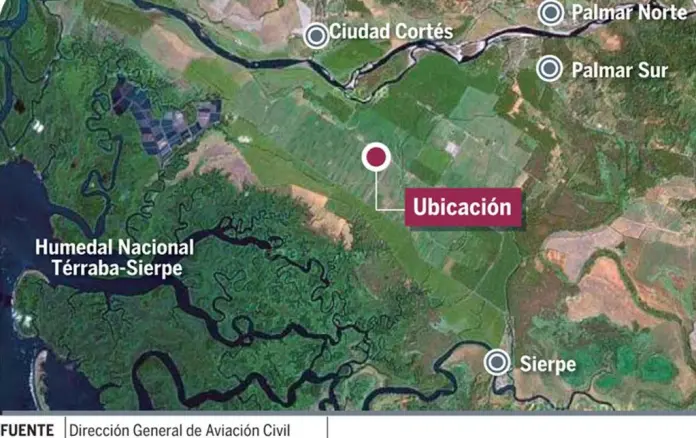In Costa Rica’s picturesque Southern Zone, a government proposal to construct a new airport is meeting fierce resistance from local communities and environmental advocates. This planned infrastructure project, intended to boost tourism in the region known for its ‘Pura Vida’ allure, is now at the center of a heated debate over conservation, cultural heritage, and the very essence of sustainable development.
A Threat to Cultural and Natural Heritage
The proposed airport site overlaps with the Diquís Delta, a UNESCO World Heritage Site renowned for its pre-Columbian artifacts. Local communities venerate this land as sacred, not only for its historical significance but also for its environmental value. The construction of an airport in such a sensitive area raises alarms about potential irreversible damage to both cultural treasures and the ecosystem.
Displacement and Discontent Among Locals
According to a detailed report by Mongabay News, the airport’s construction would displace approximately 350 families, leaving them homeless. The looming threat of eviction has galvanized the community, igniting protests and a determined fight to protect their homes and heritage. This conflict underscores a growing rift between government ambitions for tourism-driven economic growth and the rights and wishes of local residents.
Environmental Concerns at the Forefront
The Terraba Sierpe National Wetlands, located near the proposed site, are another flashpoint in the controversy. Recognized as one of the most crucial wetlands in Costa Rica, this area supports a diverse array of flora and fauna. Environmentalists argue that the airport would jeopardize this rich biodiversity and disrupt critical habitats. In 2020, Costa Rica’s National Environmental Technical Secretariat (SETENA) echoed these concerns, issuing a negative environmental impact assessment that highlighted potential risks to local waterways and increased vulnerability to extreme weather events.
Opposition to a Flawed Tourism Model
Critics of the airport project are not just fighting against local displacement and environmental damage; they are also challenging the underlying tourism model that the government is promoting. This model, which focuses on large-scale visitation and often appropriates Indigenous traditions, is accused of transforming unique landscapes into generic destinations tailored to the preferences of tourists from the Global North. Mauricio Álvarez Mora, a geography professor at the University of Costa Rica, points out that the real aim of the airport is to replicate the tourism explosion seen in Guanacaste—a development pattern many locals view as detrimental.
Legal Battles and Community Mobilization
As the government moves forward with its plans, the affected communities are rallying to pursue legal action in hopes of preserving their land and way of life. This grassroots movement reflects a broader call for a tourism model that respects the ecological and cultural integrity of the region rather than exploiting it for short-term gains.
The Road Ahead
The controversy over the proposed Southern Zone airport is a microcosm of the global struggle between development and conservation. As Costa Rica continues to attract millions of tourists each year, the decisions made about projects like this will have long-lasting implications for the nation’s environmental health and cultural heritage. The world is watching as Costa Rica balances the scales of progress and preservation, with the hope that it can find a path that honors both its economic ambitions and its commitment to environmental stewardship and respect for local communities.
The unfolding drama in the Southern Zone of Costa Rica serves as a reminder that the rush to expand tourism infrastructure must be tempered with a careful consideration of the long-term impacts on both people and the planet.

